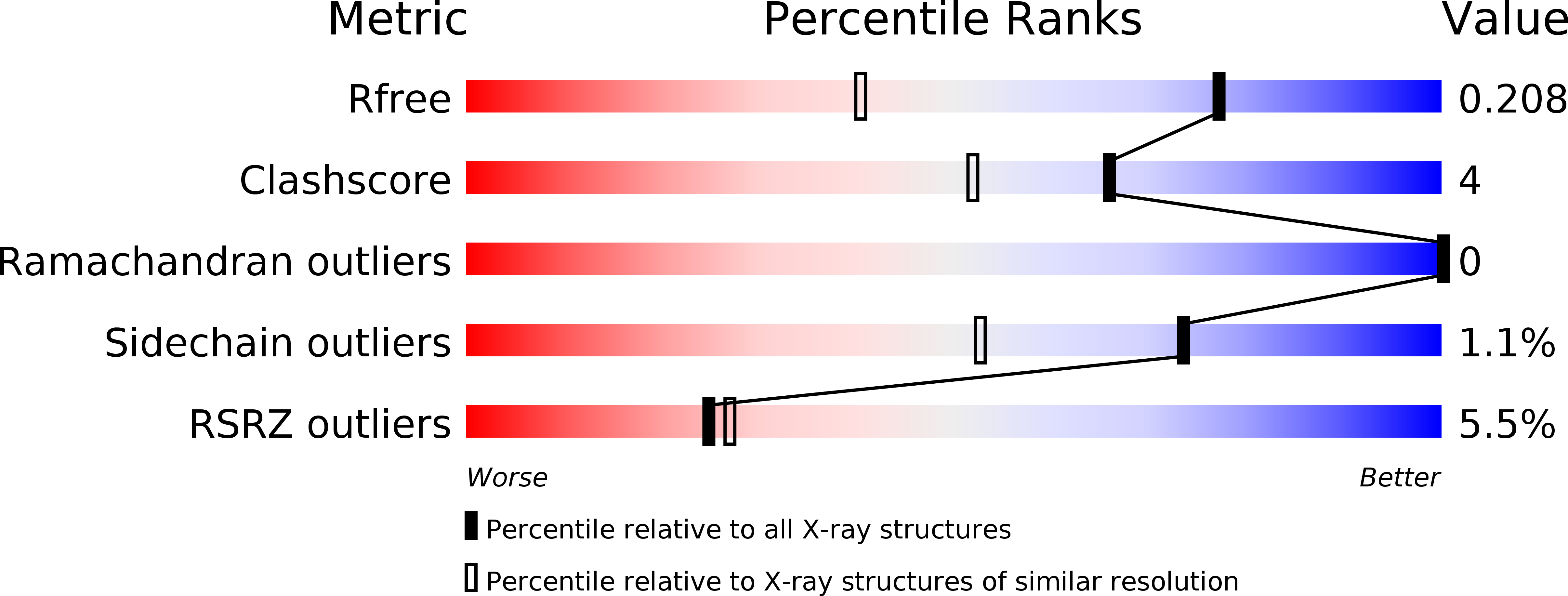Structural units important for activity of a novel-type phosphoserine phosphatase from Hydrogenobacter thermophilus TK-6 revealed by crystal structure analysis
Chiba, Y., Horita, S., Ohtsuka, J., Arai, H., Nagata, K., Igarashi, Y., Tanokura, M., Ishii, M.(2013) J Biol Chem 288: 11448-11458
- PubMed: 23479726
- DOI: https://doi.org/10.1074/jbc.M112.449561
- Primary Citation of Related Structures:
4IJ5, 4IJ6 - PubMed Abstract:
Novel-type serine-synthesizing enzymes, termed metal-independent phosphoserine phosphatases (iPSPs), were recently identified and characterized from Hydrogenobacter thermophilus, a chemolithoautotrophic bacterium belonging to the order Aquificales. iPSPs are cofactor-dependent phosphoglycerate mutase (dPGM)-like phosphatases that have significant amino acid sequence similarity to dPGMs but lack phosphoglycerate mutase activity. Genes coding dPGM-like phosphatases have been identified in a broad range of organisms; however, predicting the function of the corresponding proteins based on sequence information alone is difficult due to their diverse substrate preferences. Here, we determined the crystal structure of iPSP1 from H. thermophilus in the apo-form and in complex with its substrate L-phosphoserine to find structural units important for its phosphatase activity toward L-phosphoserine. Structural and biochemical characterization of iPSP1 revealed that the side chains of His(85) and C-terminal region characteristic of iPSP1 are responsible for the PSP activity. The importance of these structural units for PSP activity was confirmed by high PSP activity observed in two novel dPGM-like proteins from Cyanobacteria and Chloroflexus in which the two structural units were conserved. We anticipate that our present findings will facilitate understanding of the serine biosynthesis pathways of organisms that lack gene(s) encoding conventional PSPs, as the structural information revealed here will help to identify iPSP from sequence databases.
Organizational Affiliation:
Department of Biotechnology, Graduate School of Agricultural and Life Sciences, University of Tokyo, 1-1-1 Yayoi, Bunkyo-ku, Tokyo 113-8657, Japan.
















